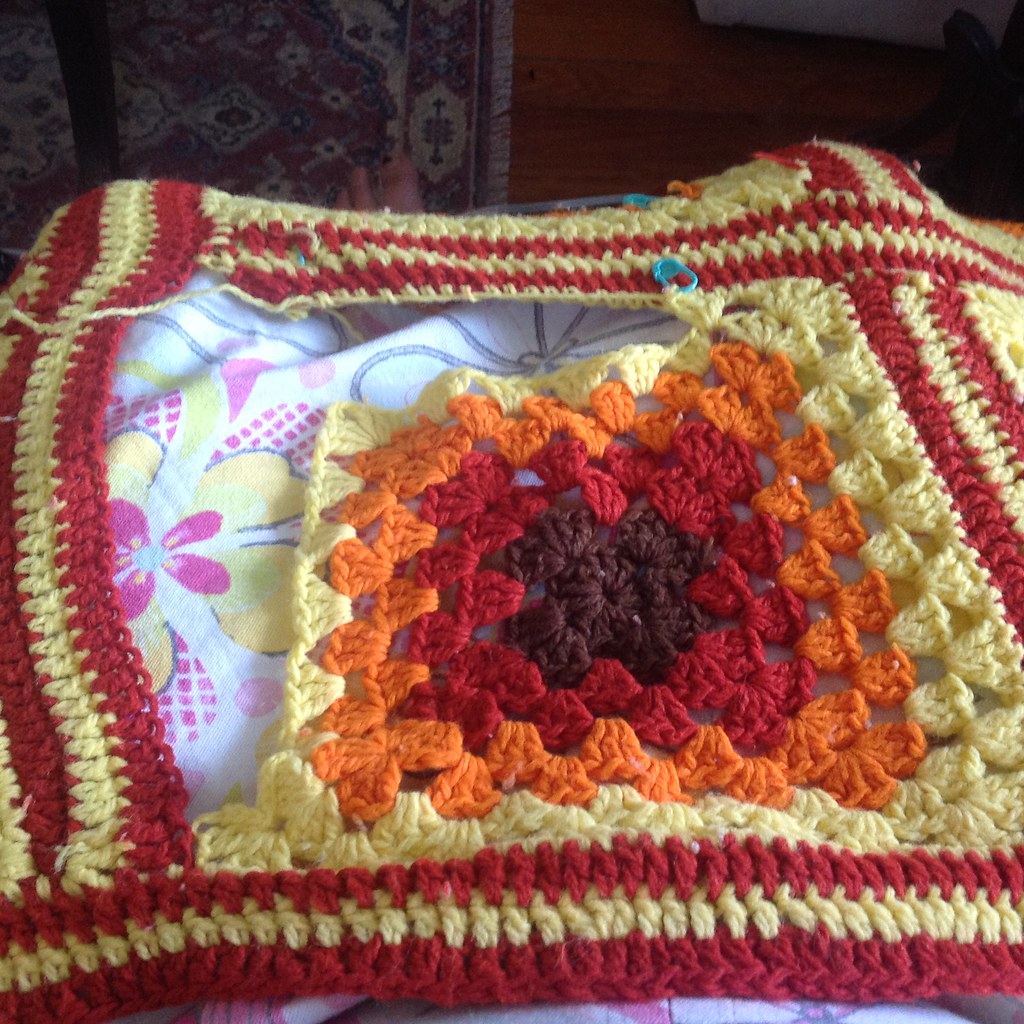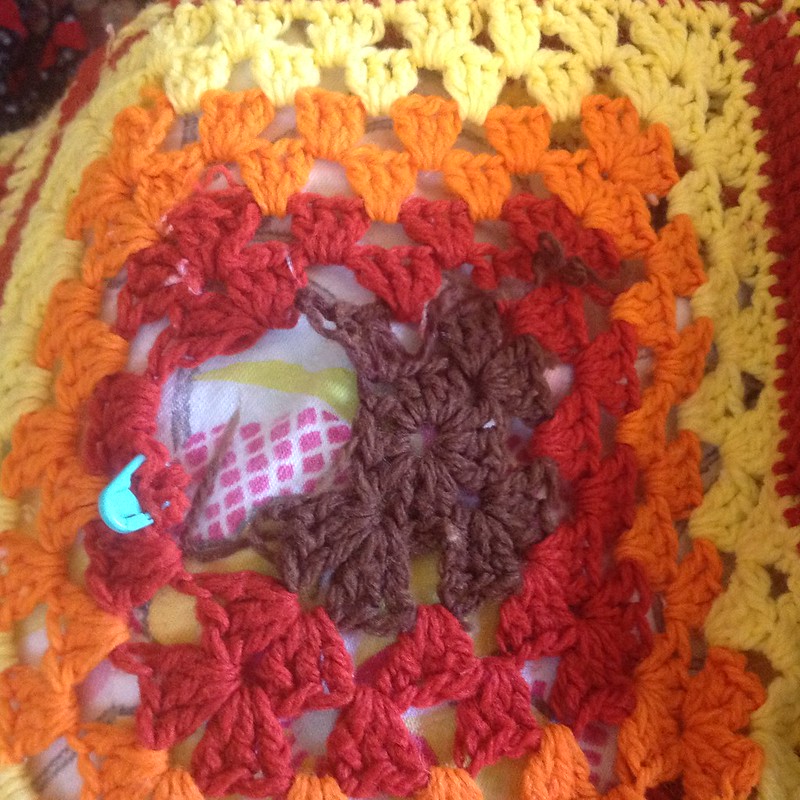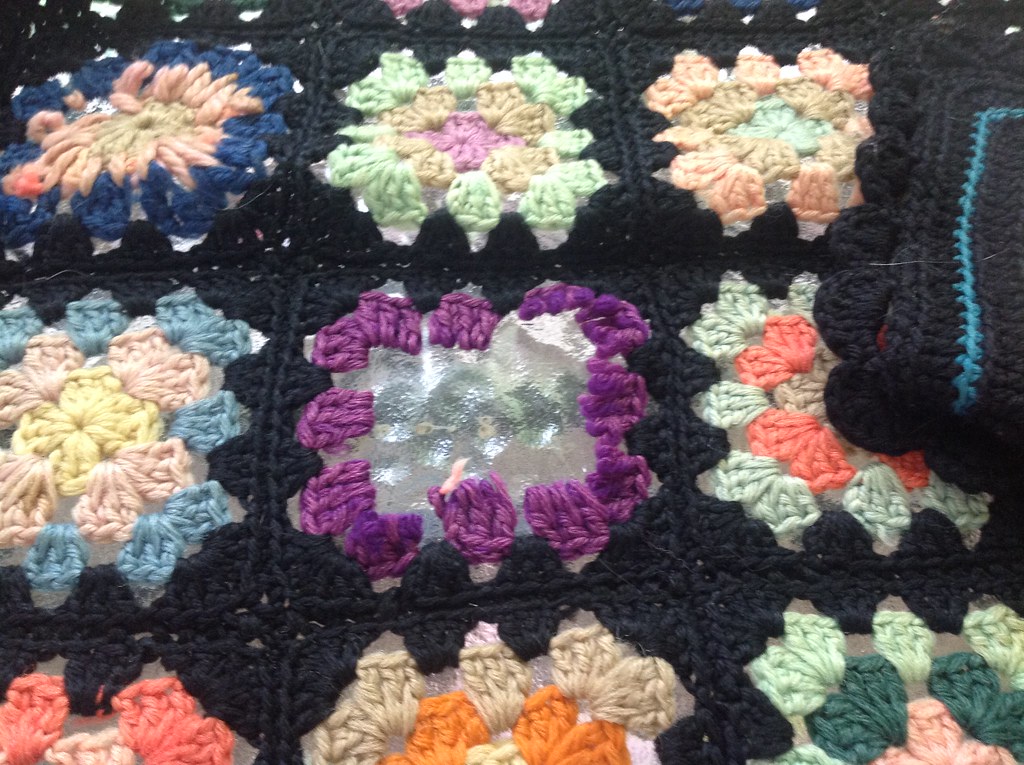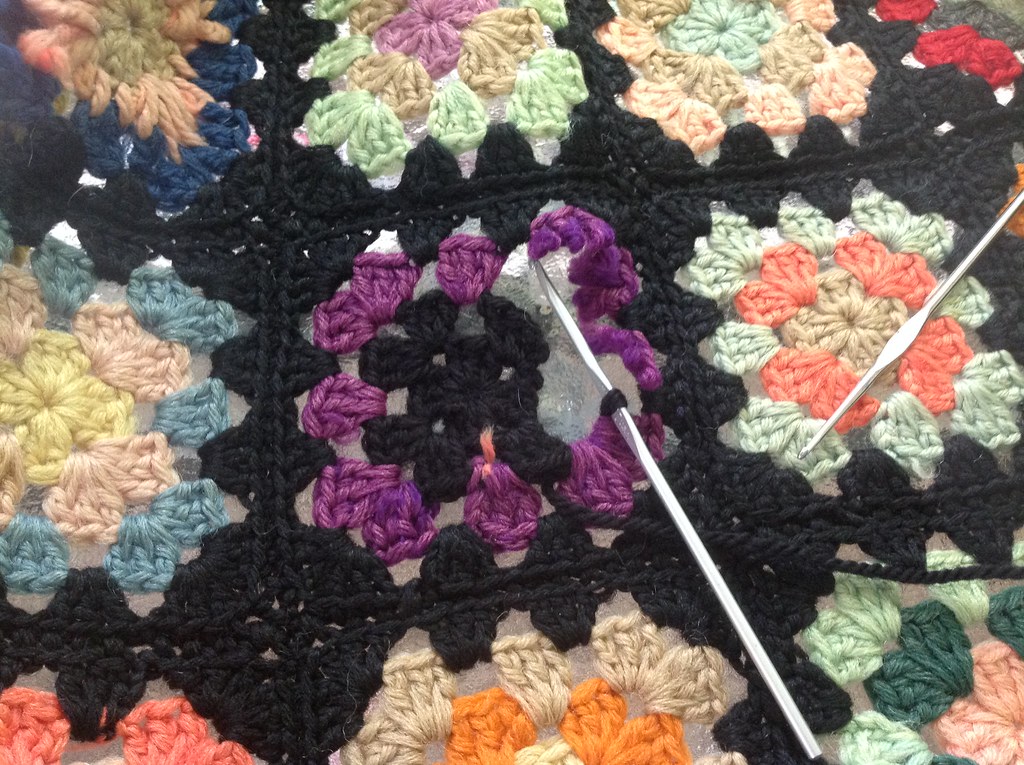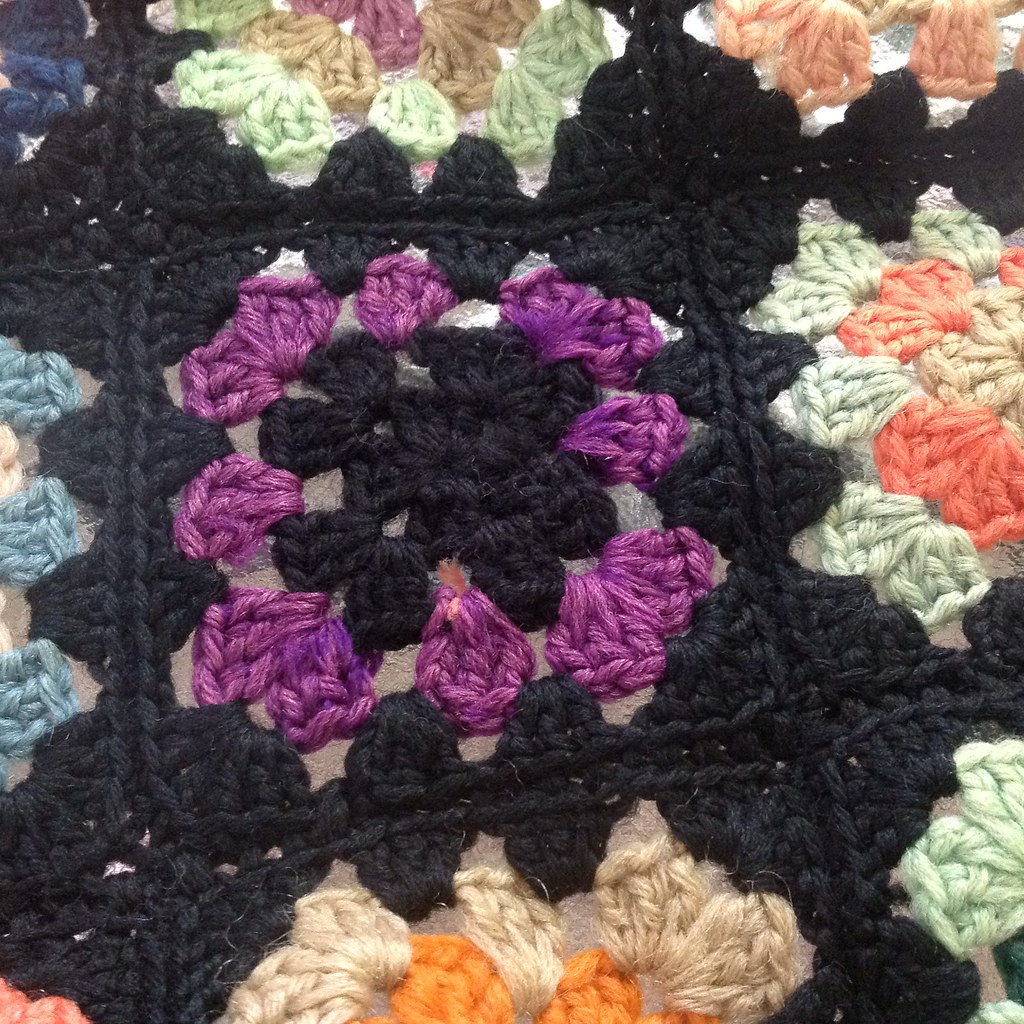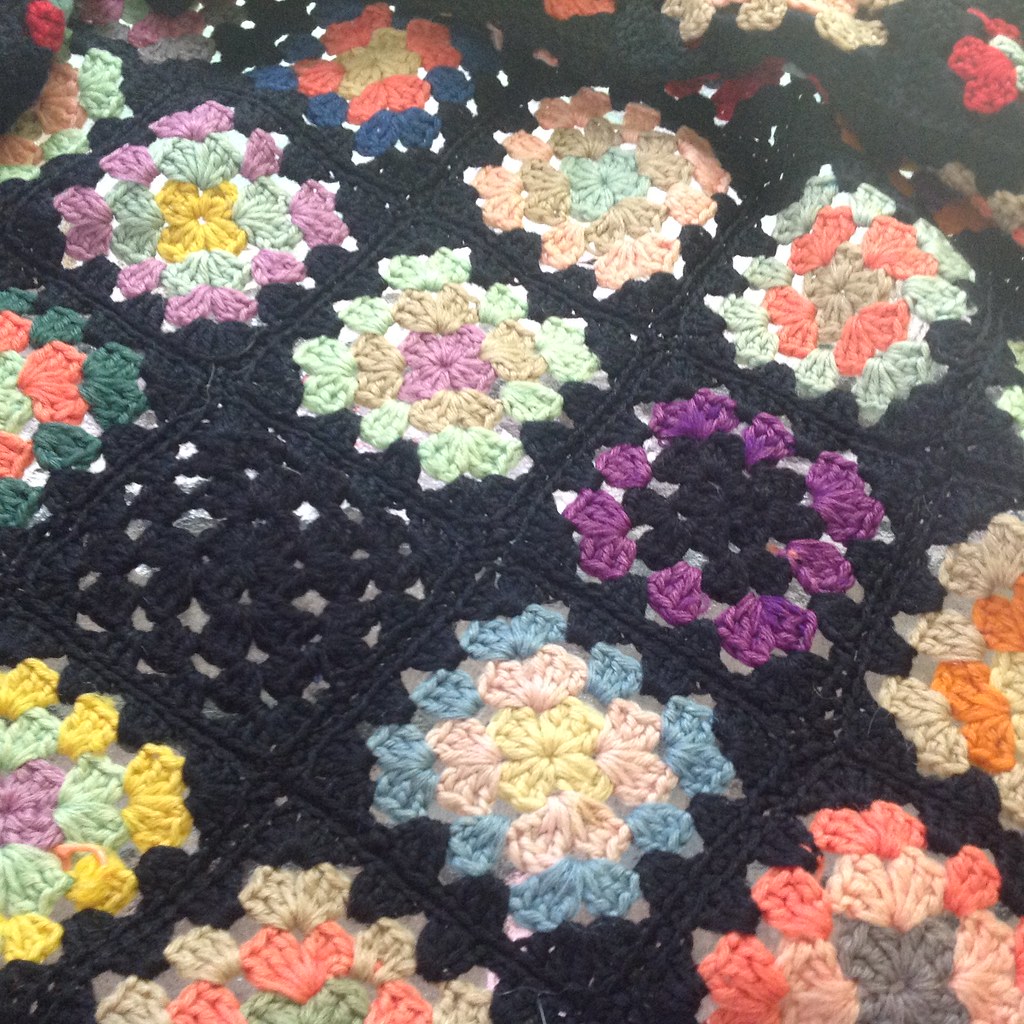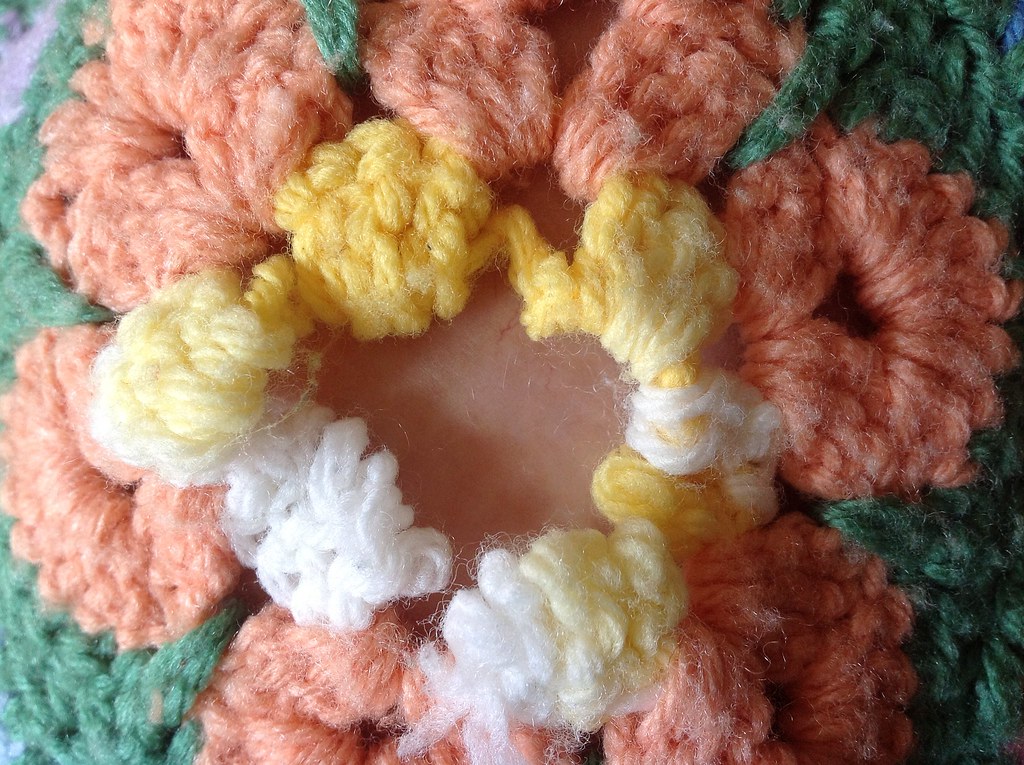Have you ever wondered what goes on before I take on a project to repair?
Before I accept an item to fix, I like to have a dialogue with clients about the piece, their goals, and my ability. All of this starts with the Repair Request I have on my Contact Me Page.
So what makes a good repair request? I often have to clarify to potential clients what I need to come up with an accurate estimate to repair the item they’d like me to work on. When you, the client, fills out our contact form, it asks you a series of questions such as:
- How important is matching color or matching fiber content?
- How important is it to you that the repair be machine washable vs. needing to be washed by hand?
- How are you intending to use the item?
- How fragile does the fabric appear?
- How important to you is cost?
- How important is it for you to preserve as much of the textile as possible?
When you answer these questions, they help me understand where your priorities lie in the the repair. Some repairs can be functionally stable, but the color or fiber content might not be the best match. Finding a good color match can be time consuming – are you willing to reimburse me as I purchase different yarns to find the best match for the repair? If you are intending to put the item on display vs use it everyday, that may influence how much of the object needs to be repaired – daily use means I should also prioritize areas I see are going thin, because with more use they may easily become holes soon.
One of the best ways I can get a sense of the item (aside from sending it to me) is to take good photographs. Take a look at the photos below as I show what was really helpful about them.
This is a great overall photo of the piece. I can see the pieces of paper that mark the holes, and I know where the holes are in relation to each other. It gives me a sense of the scale of the piece, the overall pattern, and if there are any edgings or other factors I have to take into account while working.
Great photo with a number. The ruler provides a lot of detail for me: I can tell the size of the yarn and how big the hole is. The hole is filling enough of the frame that I can zoom in to look at how the fibers are worn away (ie: frayed, cut, ragged).
Again, the ruler is super helpful. I can also tell the customer had their hands on either side stretching the fabric slightly so I could see everything.
So helpful to have number 3 and 4, which are close together, numbered! In cases where holes are close together, the location of the holes can impact how I approach the repairs, so it’s helpful to see that relational information.
Here the hole was small enough that I couldn’t see it in the overall picture, but can see it here. It was so helpful!
One of the other things this client did was mark each hole with a piece of string. This really saves both of us time. While sometimes people don’t realize there is a hole that I catch, the time it takes for me to find holes that the client already knows about is time I could use on doing repairs. Ultimately it saves us both time, and in the end, the client money.
Got a piece you’d like me to look at? Now that you have a sense of what I’m looking for, head over to Let’s Connect, and get the conversation started.

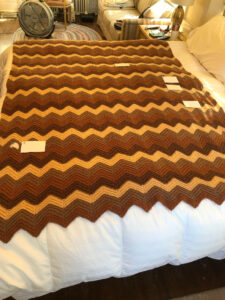
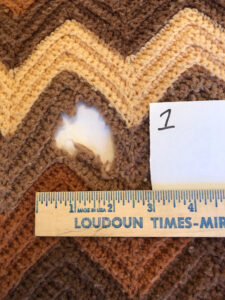

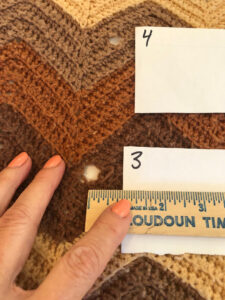
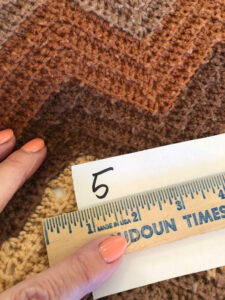
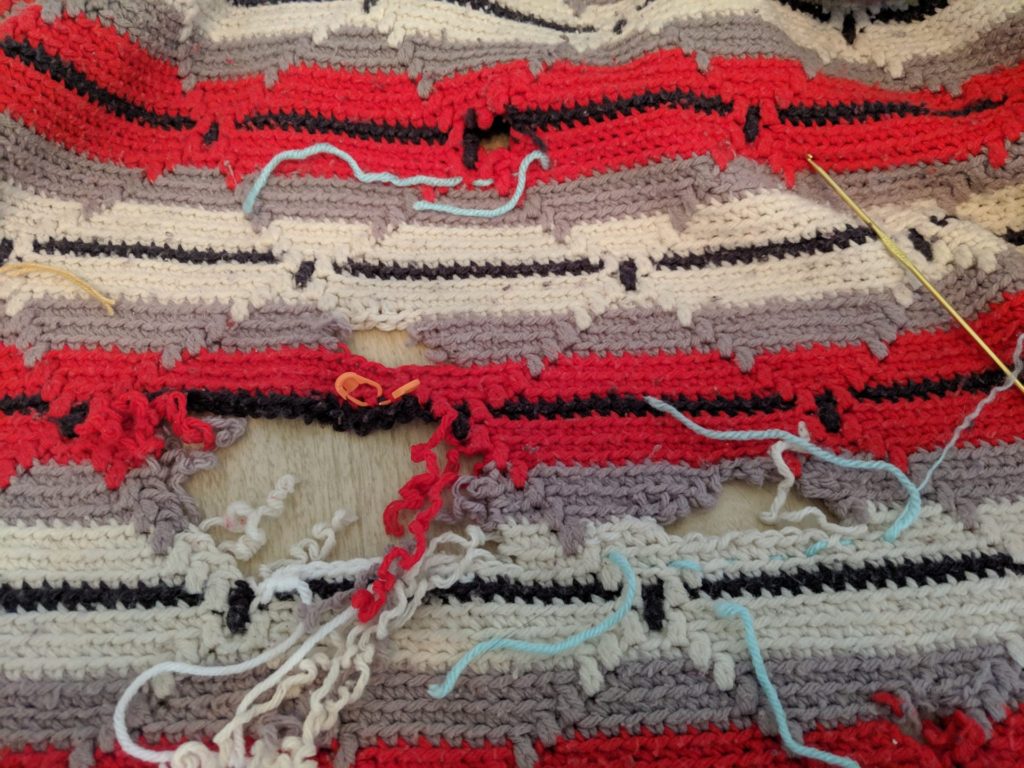
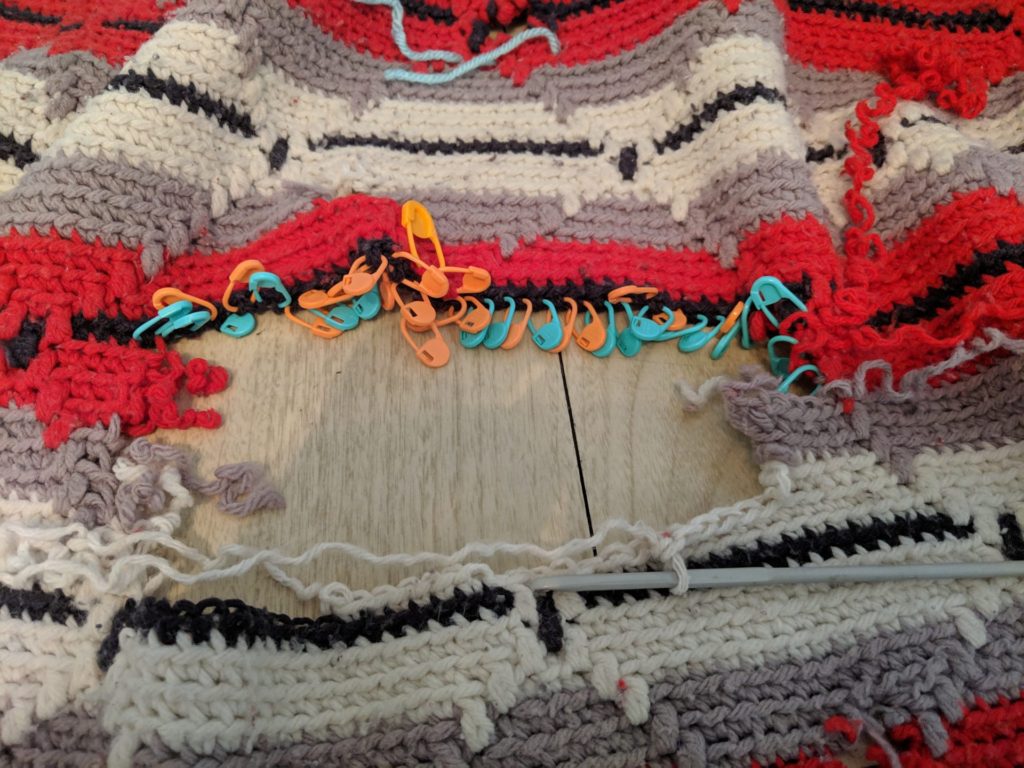
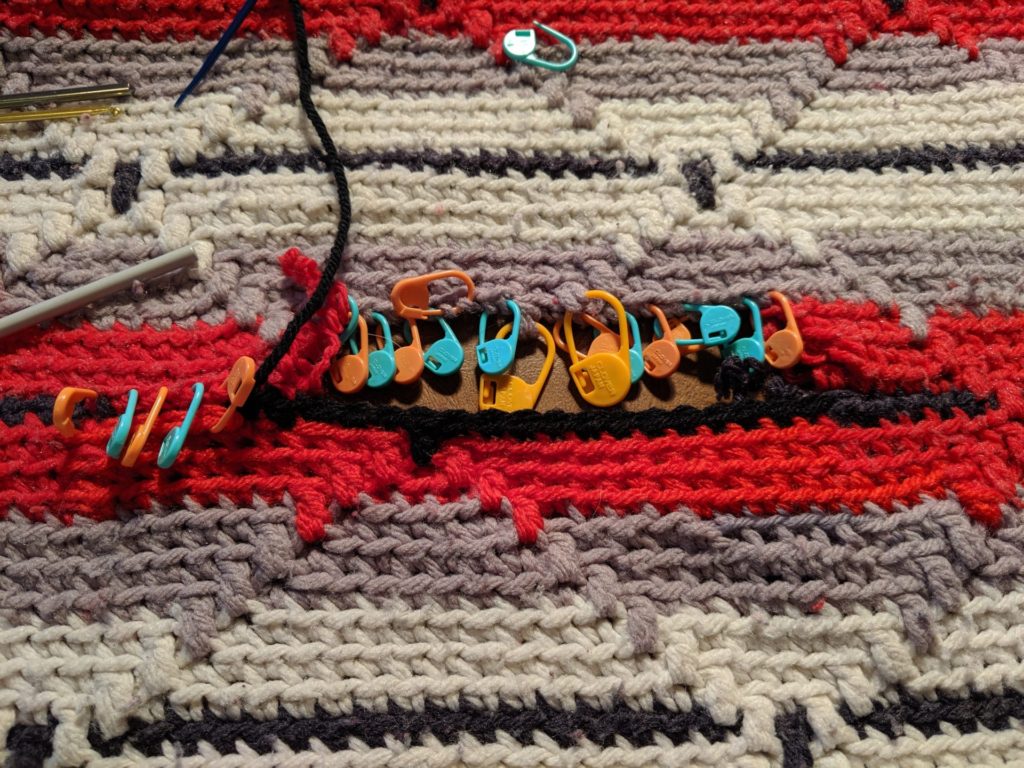
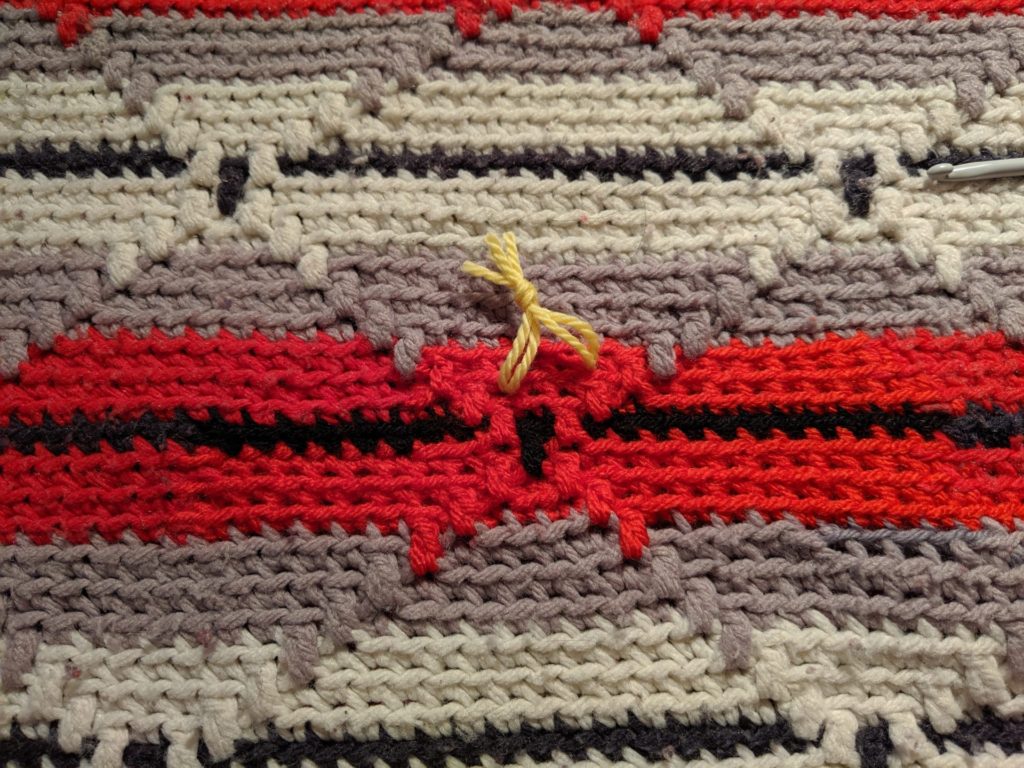
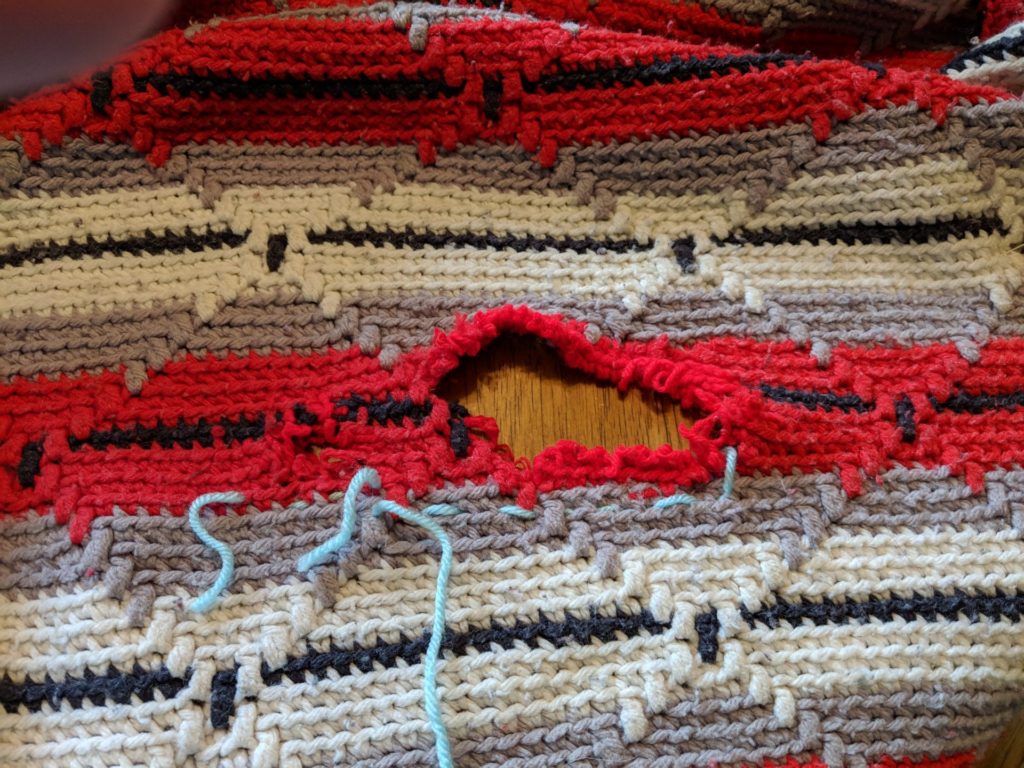
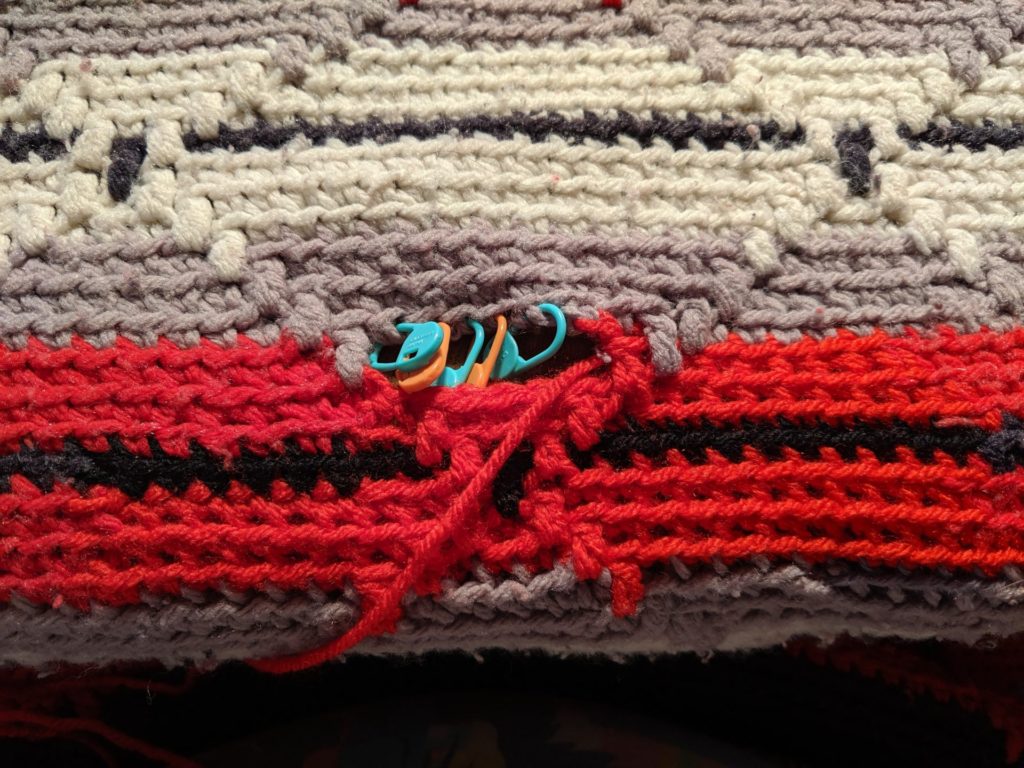
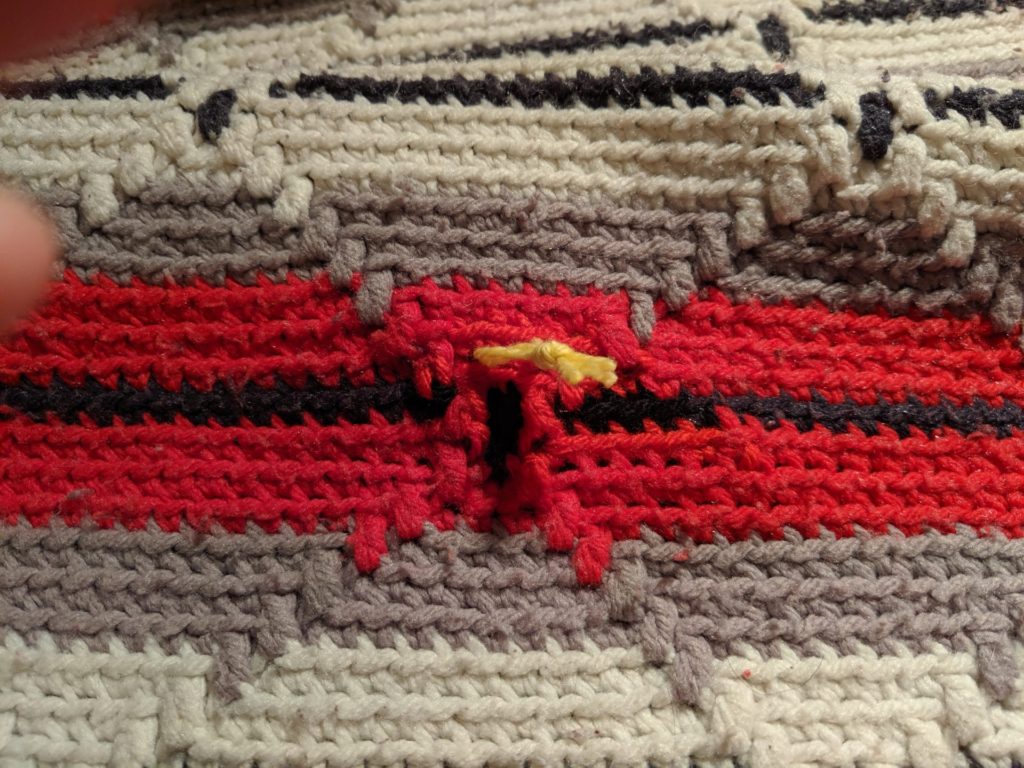
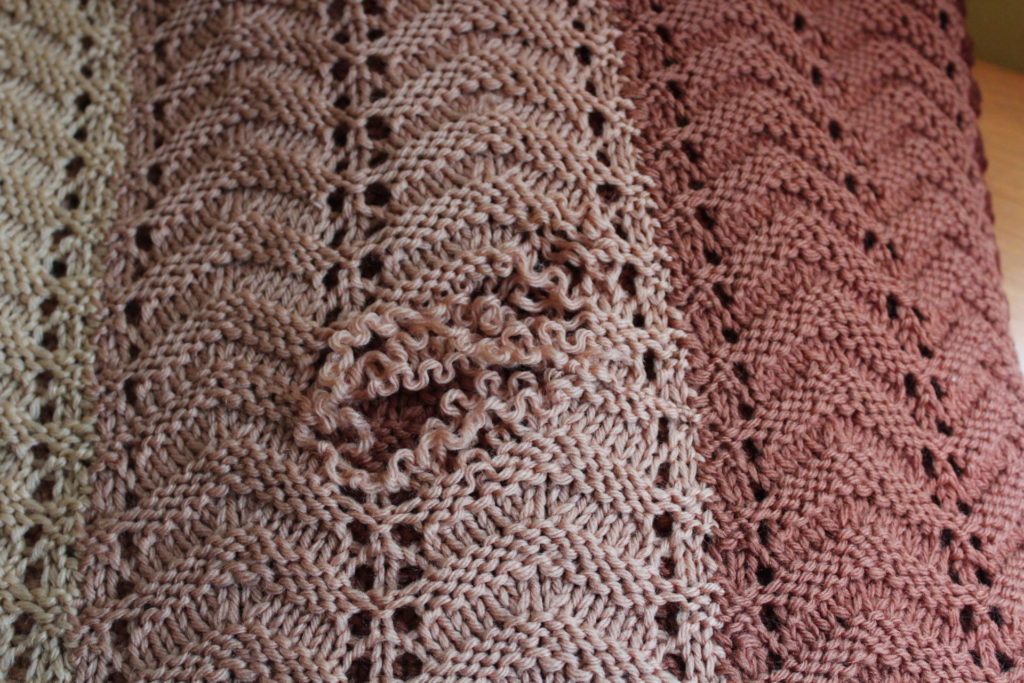
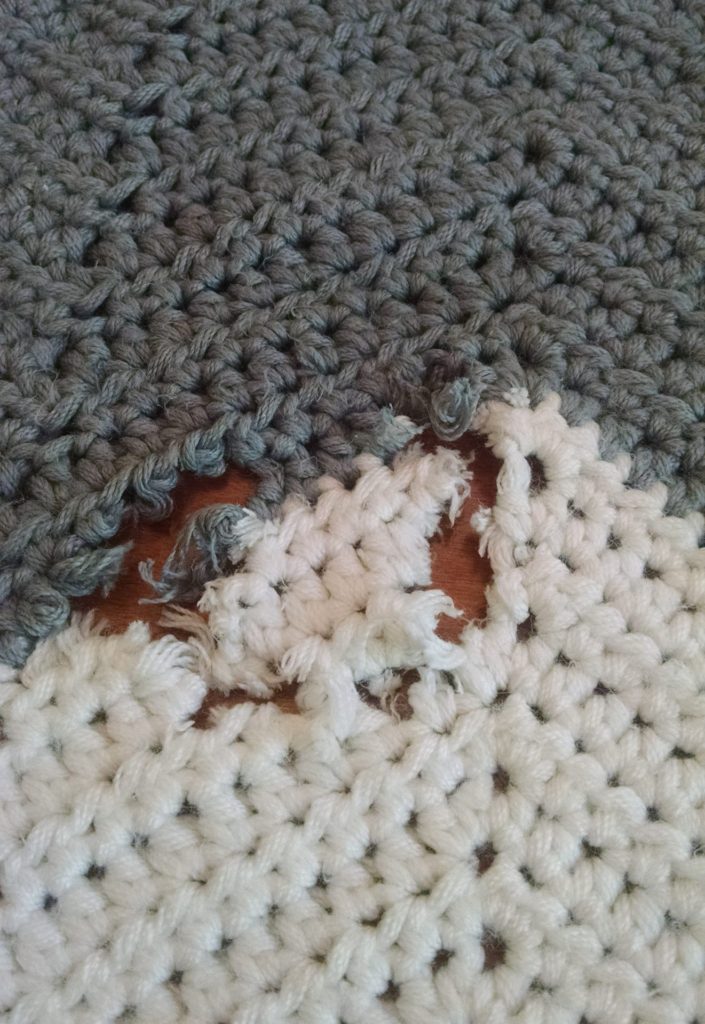
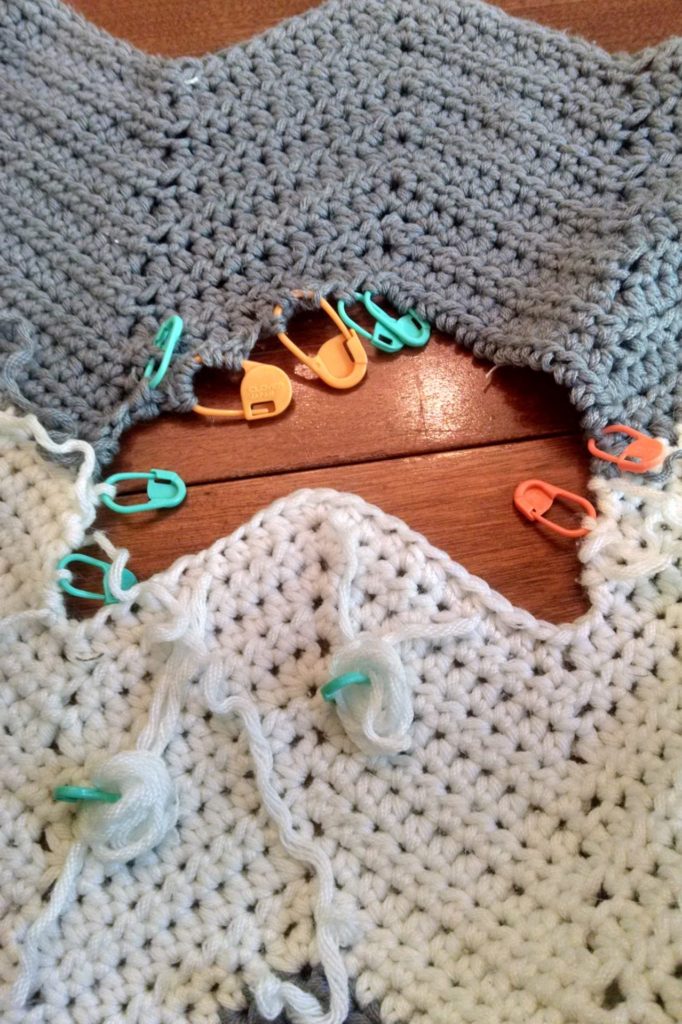
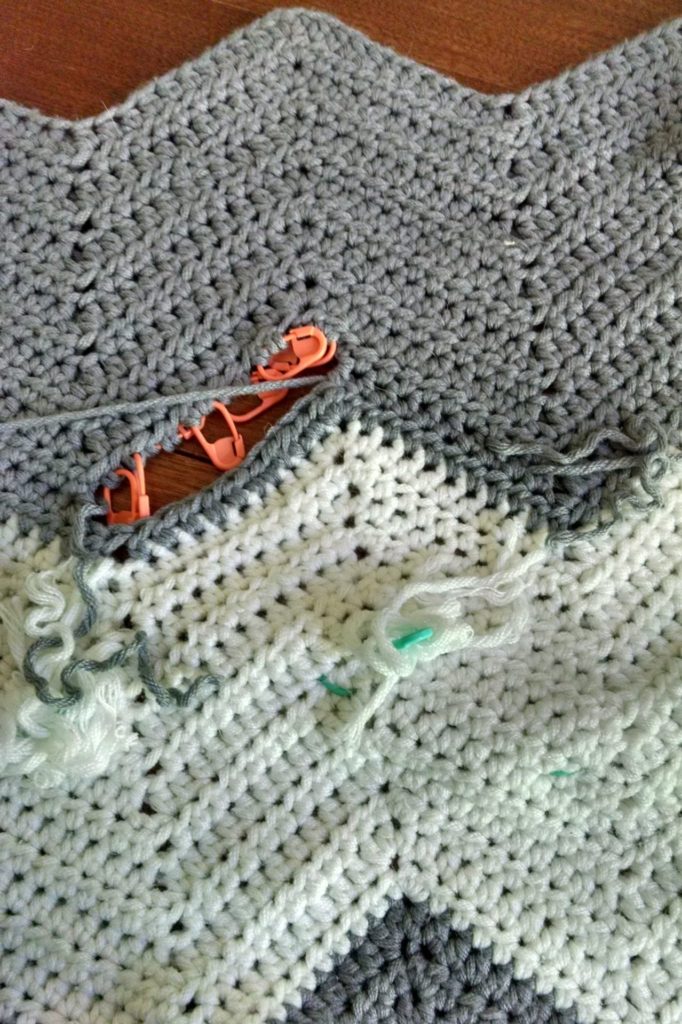
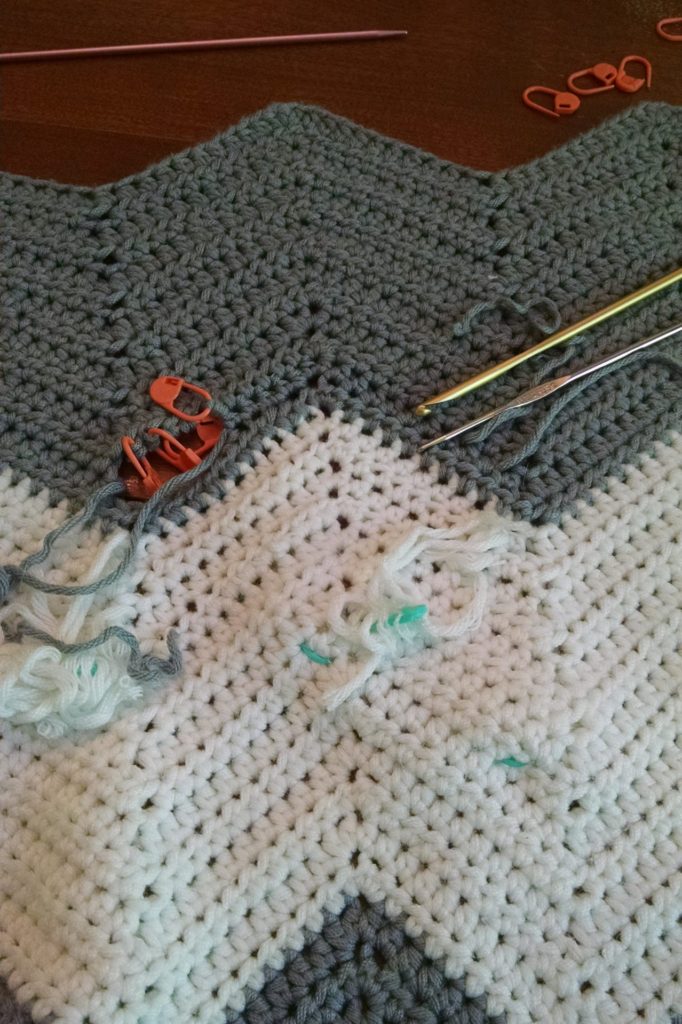
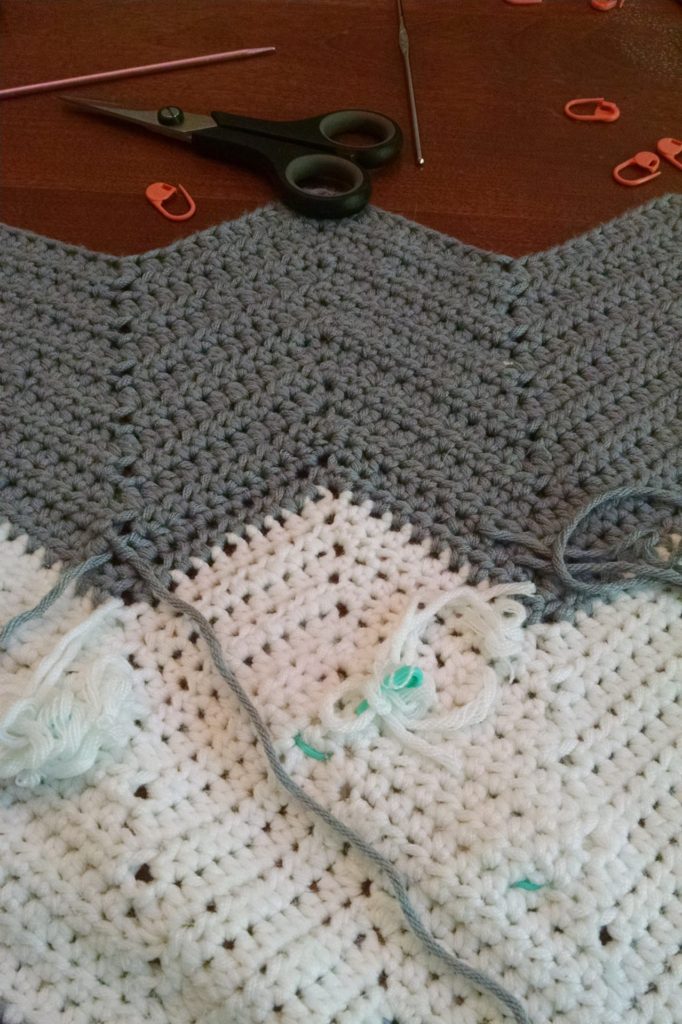
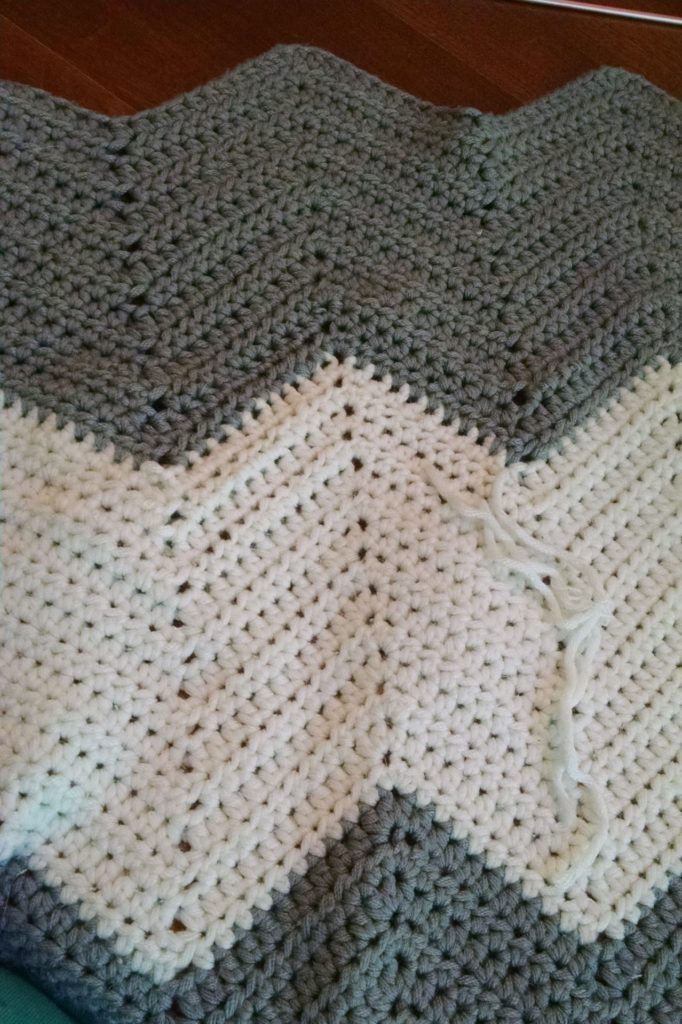
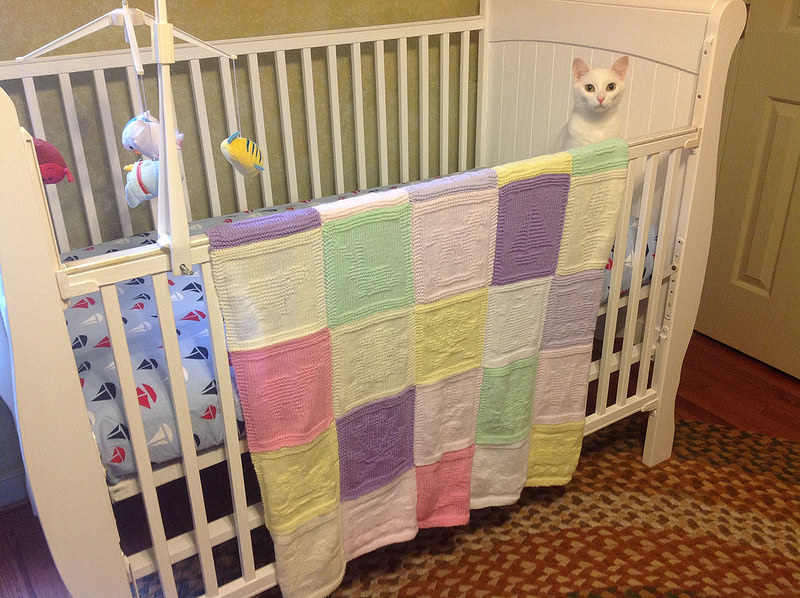
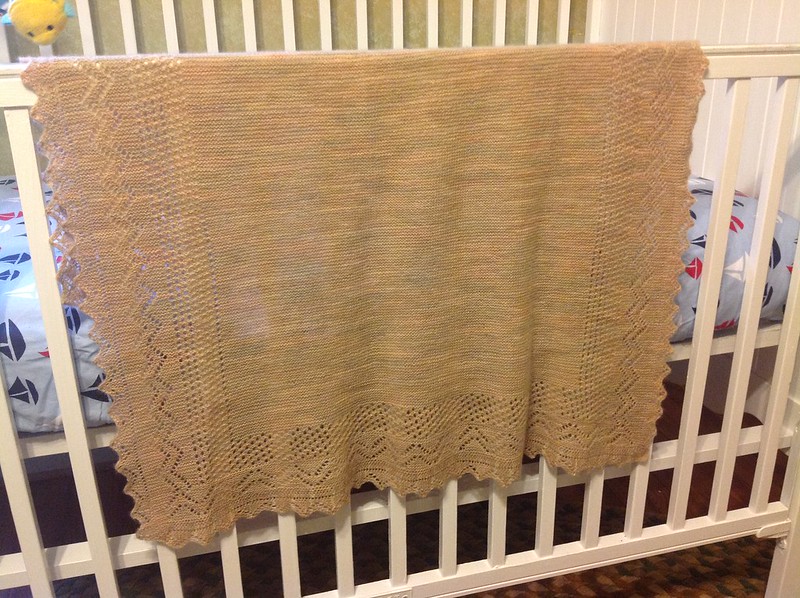
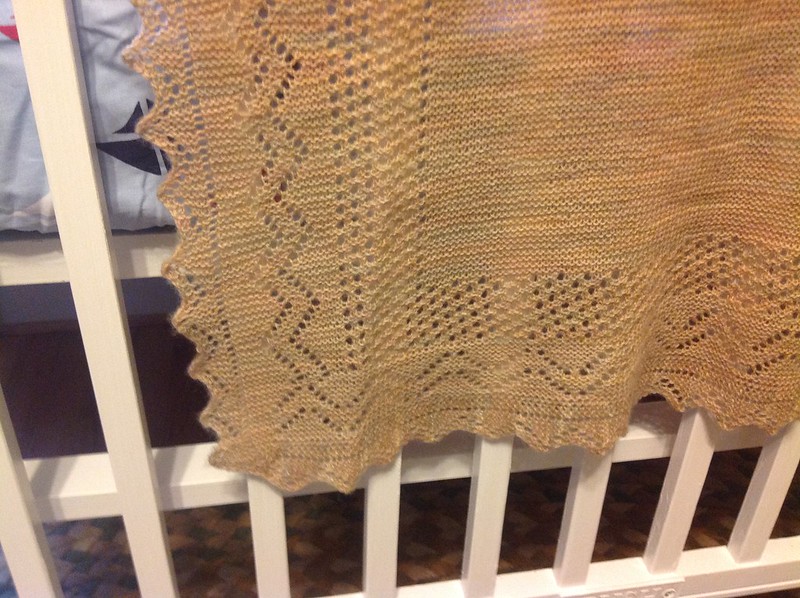 Her blanket is different than the first blanket as night and day. For one, this is made by one knitter’s hands. It’s a wool and cashmere blend, as light as a feather and softer than my cats. I’ve picked it up and held it to my face multiple times. It’s knit in fine, fine yarn. It’s also one of the reasons I tell people not to discount garter as being elegant. Many people associate garter stitch as being more rustic, and perhaps even a little basic. I can understand why as it’s often used in sturdy garments and in baby wear.
Her blanket is different than the first blanket as night and day. For one, this is made by one knitter’s hands. It’s a wool and cashmere blend, as light as a feather and softer than my cats. I’ve picked it up and held it to my face multiple times. It’s knit in fine, fine yarn. It’s also one of the reasons I tell people not to discount garter as being elegant. Many people associate garter stitch as being more rustic, and perhaps even a little basic. I can understand why as it’s often used in sturdy garments and in baby wear.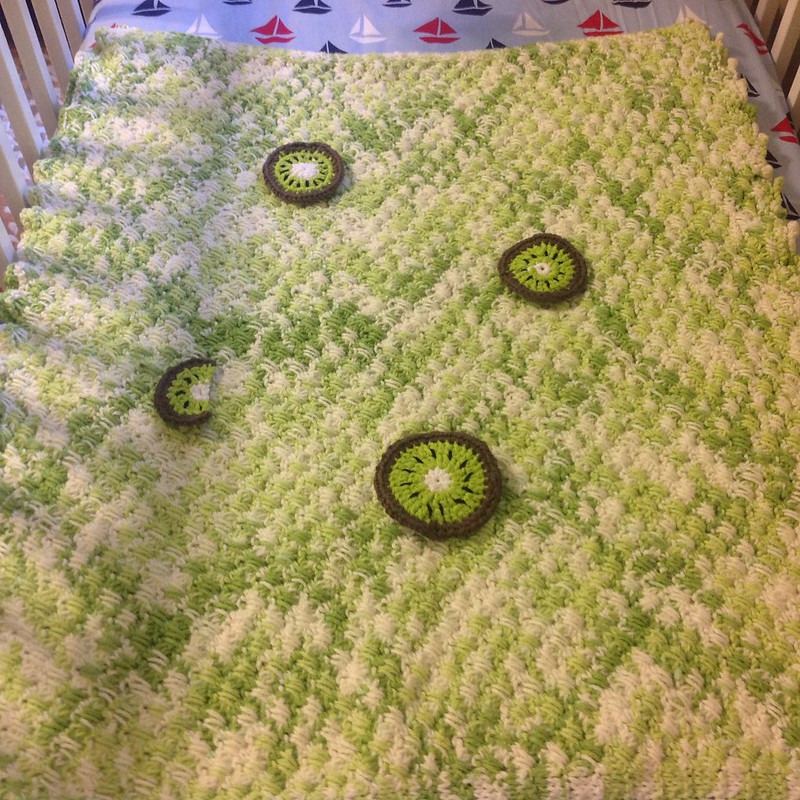
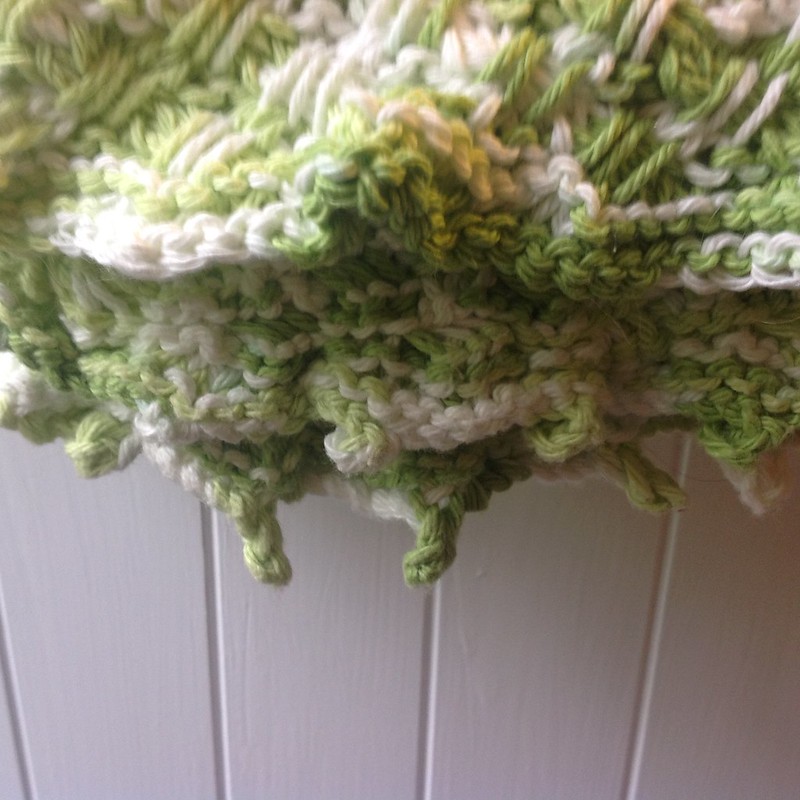 This blanket was made by my workout buddy and altogether closest friend in the Richmond area, Krista. It’s made as a nod to Little Turtle’s nickname before we decided on her real name. Mr. Turtle and I called the babe Kiwi, after one of the fruits she was the size of in the first trimester, and somehow it stuck. (It may well also be because of how many kiwi’s I’ve eaten over the course of this pregnancy). This is a rough-and-tumble blanket, made from a sturdy knit stitch with a fun little border. It’s cotton, easily washable and it holds up to wear and tear. This is the blanket for taking outside (grass stains will blend in!) and throwing into the car. Krista, working with kids, knows the type of blanket needed for an active child, which is what I’m sure Little Turtle will be!
This blanket was made by my workout buddy and altogether closest friend in the Richmond area, Krista. It’s made as a nod to Little Turtle’s nickname before we decided on her real name. Mr. Turtle and I called the babe Kiwi, after one of the fruits she was the size of in the first trimester, and somehow it stuck. (It may well also be because of how many kiwi’s I’ve eaten over the course of this pregnancy). This is a rough-and-tumble blanket, made from a sturdy knit stitch with a fun little border. It’s cotton, easily washable and it holds up to wear and tear. This is the blanket for taking outside (grass stains will blend in!) and throwing into the car. Krista, working with kids, knows the type of blanket needed for an active child, which is what I’m sure Little Turtle will be!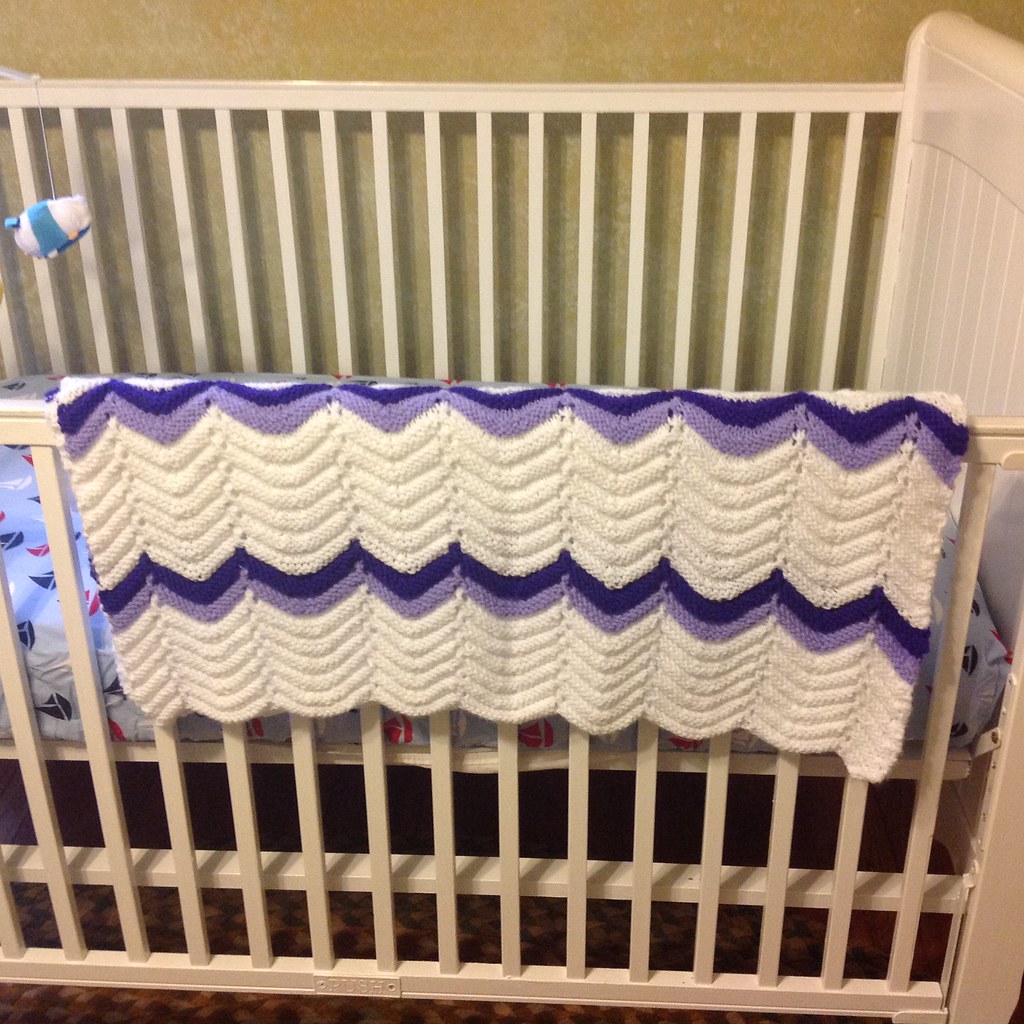
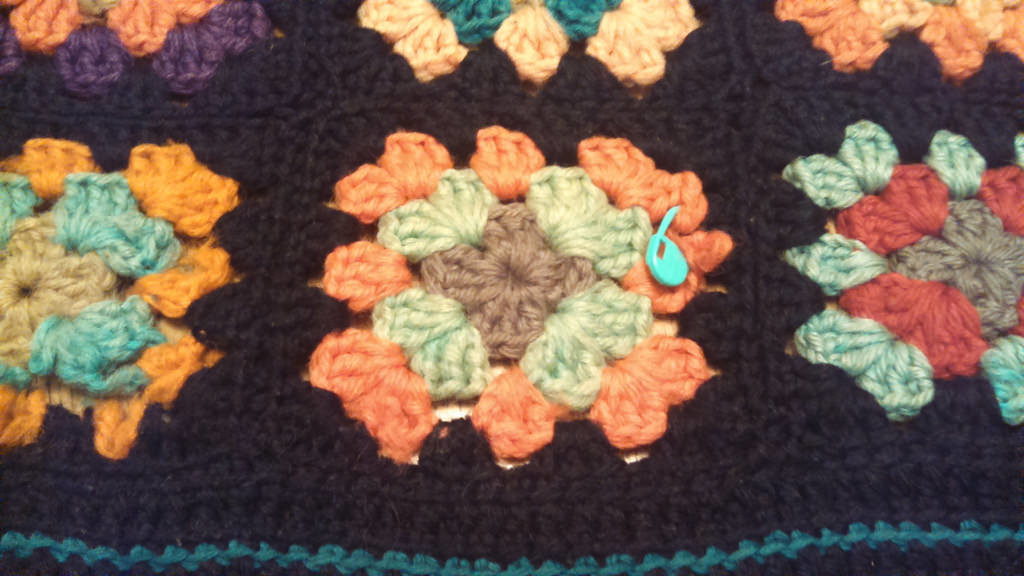
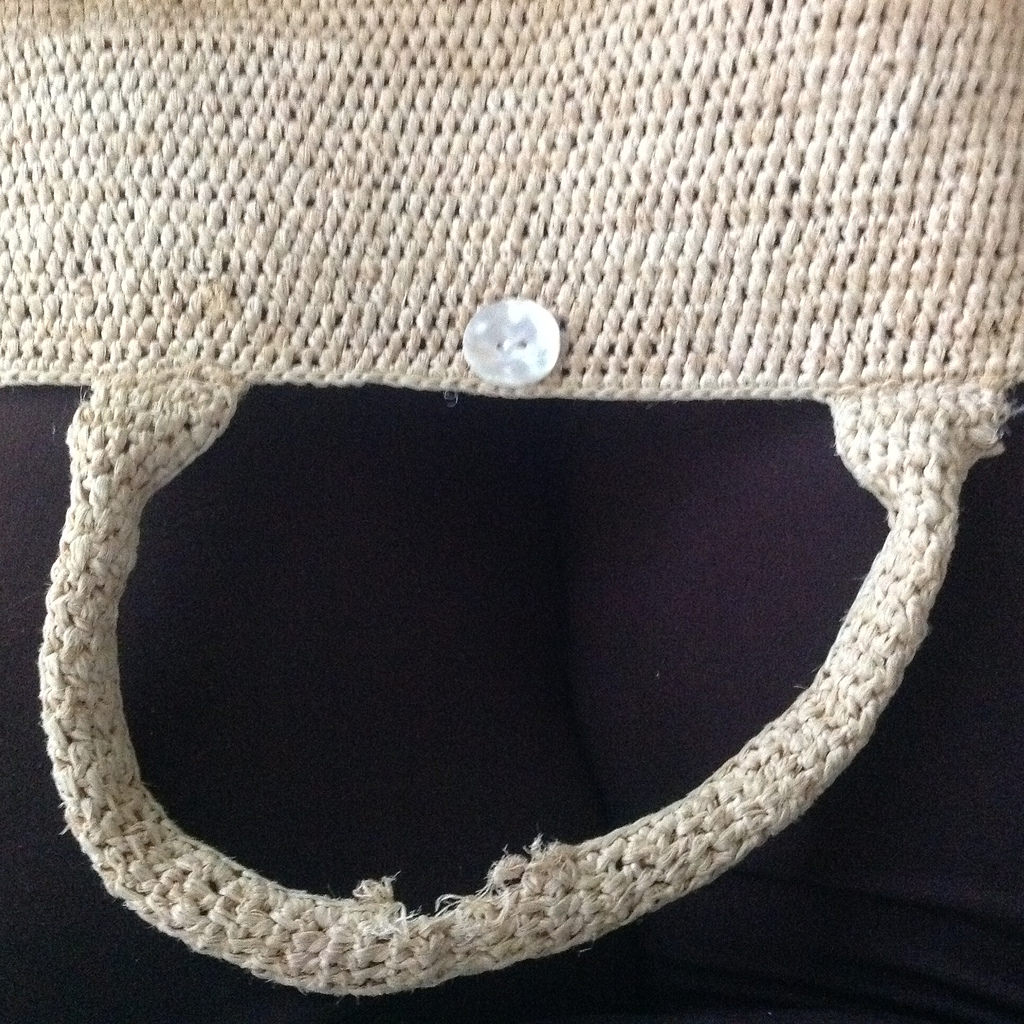 Meanwhile, I’m also looking at the practical part of the project. How damaged is the item? How widespread is the wear? Would attempting to fix the item hurt things further? When I’m looking into this I’m often learning about the history of the item: if it was stored in a place where a lot of sunlight, heat or humidity could get to it, the fibers may be damaged. Are the places where wear is showing from use – such as worn out fingers on mittens, or a handle on a bag becoming worn, or because of a different factor? Often the answers form the type of repairs I can do – mittens that are going to get further wear over each winter are going to receive different treatment than a Christmas stocking that’s taken out once a year.
Meanwhile, I’m also looking at the practical part of the project. How damaged is the item? How widespread is the wear? Would attempting to fix the item hurt things further? When I’m looking into this I’m often learning about the history of the item: if it was stored in a place where a lot of sunlight, heat or humidity could get to it, the fibers may be damaged. Are the places where wear is showing from use – such as worn out fingers on mittens, or a handle on a bag becoming worn, or because of a different factor? Often the answers form the type of repairs I can do – mittens that are going to get further wear over each winter are going to receive different treatment than a Christmas stocking that’s taken out once a year.